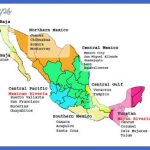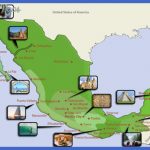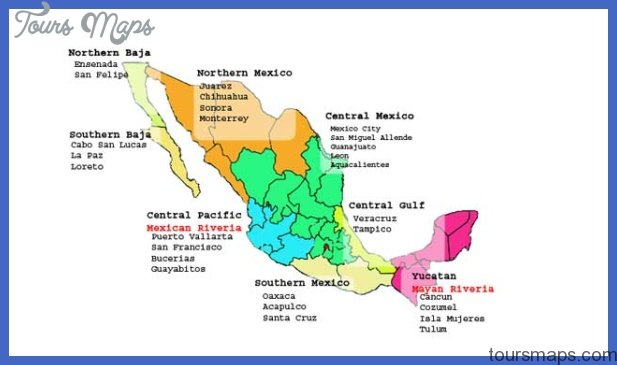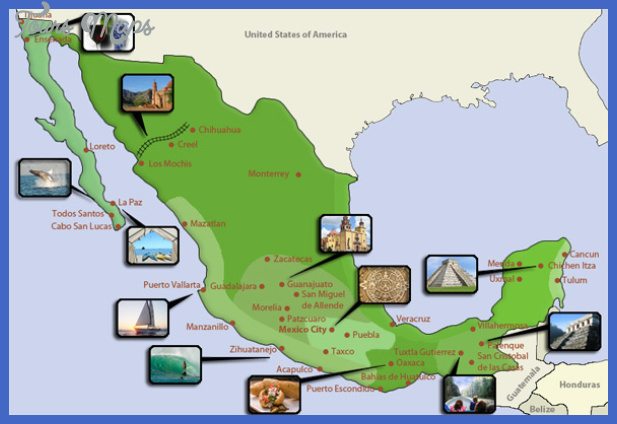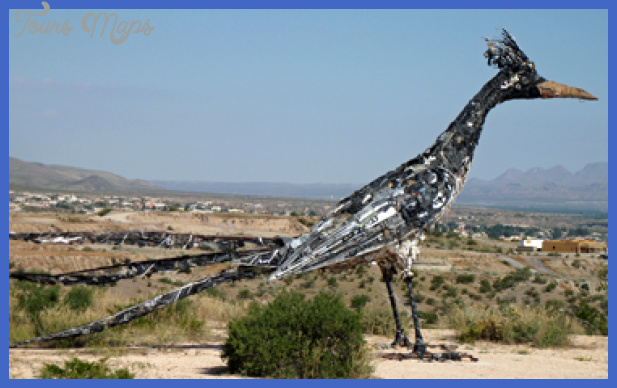New Mexico The Modern Period (1810-2000)
New Mexico immediately came under the control of Mexico, but the new national state was considerably weakened. The northern provinces in New Mexico, California, and Texas were largely ignored by the off-and-on rule of Antonio Lopez de Santa Anna, and the Mexican state was financially weak and crippled by internal political divisions and instability in general. As a result the northern provinces were in a dire financial situation. At the same time the Mexican state increased taxes in New Mexico in the 1830s, leading to a revolt in 1837. The former governor of New Mexico, Manuel Armijo, organized a militia to suppress the tax revolt and executed its leaders, which led to his reappointment as governor. But Armijo was powerless to protect New Mexico against the aspirations of Texas and the United States. Beginning in 1841 traders and militias from Texas started raids on New Mexico. Ultimately, the territorial disputes over the eastern borders of New Mexico and the movement in Texas to declare an independent republic led to the Mexican-American War of 1846-1848. In the case of New Mexico, the policy of U.S. president Polk was of Manifest Destiny: he sent the U.S. Army into New Mexico to occupy it. Armijo fled, and on August 16, 1846, New Mexico was made a territory of the United States.
The shift from Mexican to U.S. rule ushered in a radically different era. Under the political control of a predominantly Anglo nation, New Mexico and Nuevomexicanos entered a period in which Hispano political power was retained but considerably diminished compared to the pre-U.S. period. This also meant that the previous ethnic divisions of Hispano and Native American would be further complicated by Anglo rule. At the same time the Treaty of Guadalupe Hidalgo which formalized the end of the Mexican-American War and ceded California, Arizona, New Mexico, and Texas to the United States recognized the Spanish and Mexican legal systems of land holding and property. This, however, did not hold for women. There was a very old Spanish legal and customary tradition that allowed women to hold, possess, and control her own property a right U.S.-born women did not share. Under U.S. control, Hispanic women were subjected to the Anglo system, which stripped them of their right to hold and maintain property. Language also became a major issue. As is the case still today, the question of a bilingual society was paramount in nineteenth-century New Mexico: Should students be educated in Spanish, the first language of most Nuevomexicanos? Or should schools adopt English as the mandatory language? These questions became central to political debates in New Mexico, as seen in Las Vegas, when Chacon, himself a native Spanish
speaker, explained the problems of assuming the cultural or linguistic inferiority of Spanish.
The issues of ethnicity and religion would plague a good deal of the early period of New Mexico as part of the United States. Though the presence of Latinos in much of the United States is a recent phenomenon, Latinos had been in New Mexico for centuries prior to its inclusion in the United States. In 1853, Santa Fe was made a diocese for the first time, and the first bishop was a Frenchman, Jean-Baptiste Lamy. Immediately, as in language and politics, ethnic tensions arose because Lamy distrusted Nuevomexicanos and Hispanic culture.
The end of the nineteenth century saw the opening of New Mexico to expanded trade and population. Always sparsely populated (just after its acquisition by the United States, the population of New Mexico was of approximately
50,000 people), the expansion of the railroad into Santa Fe meant increased travel and trade. By the turn of the century the long isolation of New Mexico had begun to end. With it, though, came mixed blessings. In the early twentieth century there were debates about the suitability of New Mexico as a potential U.S. state, and not a territory. Racist arguments that New Mexico was too Mexican and therefore somehow uncivilized prevented several attempts to make New Mexico a U.S. state, but New Mexico’s statehood was finally approved in 1912. Shortly thereafter New Mexico came to be idealized by many East Coast artists and intellectuals as an exotic, far-off, almost Egyptian land.
The debate over ethnicity dominated the discussions over New Mexico’s inclusion in the United States. As noted by Chacon, many Nuevomexicanos saw themselves as descendants not of Mexico but of a kind of mythically glorious Spanish past. At the same time, during debates over statehood, the relative Spanishness or Mexican-ness of New Mexico sparked off the familiar debate about the appropriateness of New Mexico as a part of a presumably Anglo and therefore white nation with a long history of institutionalized racism, segregation, and slavery. Ironically, in the later twentieth century Nuevomexicano Hispanos would use the same prejudiced arguments against Mexican migrants.
The difficulty of ethnic politics would be central to New Mexico in the twentieth century. Though many Mexican migrants were drawn to New Mexico in the late nineteenth and early twentieth centuries, they never represented more than a small percentage of the overall Latino population. This began to change only in the 1990s. In 1900 Mexican-born Latinos represented only 3 percent of the total population of New Mexico. This figure remained steady through most of the twentieth century, with the exception of the period after the bloody revolution in Mexico (1910-1920), which caused Mexicans to flee the violence in their native country. By 1920 the number of Mexican-born Latinos in New Mexico had doubled, as they represented nearly 6 percent of the overall population. In any case, unlike in many other states in the United States, the Latino population
in New Mexico has been dominated, in general, by older Hispanos or New Mexico-born Latinos.7
The University of New Mexico was established in Albuquerque in 1889, and in that same year the New Mexico State University was founded as an agricultural college in Las Cruces. By the mid-twentieth century New Mexico had considerably increased its population, Los Alamos labs had been established becoming central in the research and development of the atomic bombs dropped in Japan during World War II and for the first time in its history Albuquerque had an urban center. Cultural tourism also began to function as a major component of New Mexico’s economy. Cultural centers such as the Spanish Market and the Santa Fe Art Museum began to develop a specifically Hispano cultural identity and to preserve very old Nuevomexicano art and cultural forms. But in the 1960s and 1970s many Chicano political activists began to see this development as a type of co-opting of Nuevomexicano tradition and culture by a dominant Anglo society. Simultaneously, many non-Nuevomexicano politicians and historians viewed New Mexico as charming but not as really civilized. In other words, New Mexico was a culturally backward state that should be examined for its quaintness. This tendency has been attacked as facile and condescending by many Nuevomexicano intellectuals in recent years.
At the end of the twentieth century New Mexico was still a very complex society. Though it was still sparsely populated and rural, it was put on the national map through weapons production, a state university system, and a flourishing tourist industry. And in both the 2000 and 2004 presidential elections, New Mexico was an important swing state, with a large Hispanic population heavily courted by George W. Bush, as part of a strategy to expand his base in the growing Latino voting population.
At the end of the twentieth century New Mexico retained not only a good deal of its Hispano cultural heritage but also the highest concentration of Latinos of any U.S. state. This is a product of both longstanding Hispano communities and the recent migration of Mexicans to the United States. According to 2005 U.S. census figures, New Mexico had a population of approximately just under 1.9 million residents, 822,000 of whom were Hispanic, or about 43.6 percent of the population.8 In 2000 Hispanics represented 42 percent of the population of New Mexico, according to U.S. census data.9 Of these Hispanics, slightly less than half identified themselves as Mexican and slightly more than half identified themselves as other Hispanic or Latino, which shows the deep and abiding sense of Nuevomexicano identity as distinct from Mexican identity. In 2000 Anglos comprised just above 44 percent of the total population of New Mexico, though this number surely has gone down to about 43 percent, which means that around 2006 Latinos overtook Anglos as the largest ethnic group in New Mexico. The 2010 U.S. census will officially register that shift, making New Mexico the first state of
the modern era to have Latinos as the largest ethnic group (though this was certainly the case in the 1850s). Though the Latino population is much more varied in states such as California and though Texas and Arizona are dominated heavily by Mexican migration, New Mexico has a mixture of Latinos who identify themselves as Mexican and those who identify themselves as essentially Hispanos.
Unsurprisingly, the counties with the highest concentrations of Latinos in New Mexico are the areas first populated by Spaniards in the seventeenth century, followed by the counties along the U.S.-Mexican border. As of the 2000 census, northern sections of the state had very high Latino population density: Mora County, 82 percent; Guadalupe County, 81 percent; San Miguel County, 78 percent; and Rio Arriba County, 73 percent. Santa Fe County (at 49 percent) and Bernalillo County (home to Albuquerque and 42 percent Latino) were more mixed and in line with general statewide trends. Counties in the south, along the U.S.-Mexican border, also registered very high Latino populations: Dona Ana County, 63 percent; Luna County, 58 percent; and Hidalgo County, 56 percent.10 Whereas the Latino populations of northern New Mexico are more likely to identify themselves as Hispano, those of southern New Mexico are more likely to identify themselves as Mexican because they are themselves migrants or children of migrants.
The nineteenth and twentieth centuries in New Mexico were marked politically by ethnic divisions and tensions. Governor Bill Richardson the most famous Latino of New Mexico (three-fourths Mexican, born in Los Angeles, and raised largely in Mexico City) has promised an end to such dichotomous visions of Nuevomexicano political culture. On January 21, 2007, during an interview with George Stephanopoulos on ABC’s program This Week, Richardson was asked about his announcement that he would run for the Democratic Party’s presidential nomination in 2008. Stephanopoulos asked Richardson specifically about being a Latino and what this could mean for the nation. Richardson responded by saying, I wouldn’t run as a Hispanic candidate. I would run as an American, proud to be Hispanic, proud of my heritage.11 He responded that the United States would judge him based not on his ethnicity but on his accomplishments. In many ways Richardson’s success in politics shows just how far New Mexico has come from the Chicano vision of exclusive Nuevomexicano power and from the racism of Anglos, who saw Nuevomexicano culture as backward. Instead, Richardson seems to exemplify the new identity of most of the U.S. Southwest as a pluralistic and culturally aware society that celebrates ethnic diversity.
New Mexico Map Tourist Attractions Photo Gallery
Maybe You Like Them Too
- Explore Góra Kalwaria, Poland with this detailed map
- Explore Gumdag, Turkmenistan with this detailed map
- Explore Telfes im Stubai, Austria with this detailed map
- Explore Langenselbold, Germany with this detailed map
- Explore Krotoszyn, Poland with this detailed map

